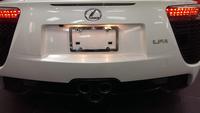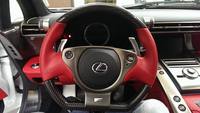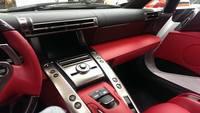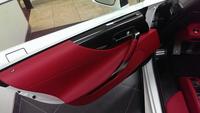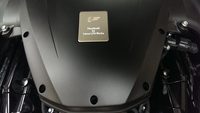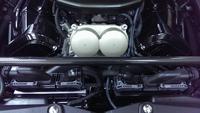Lexus LFA #152 of 500 Worldwide Production Close View Experience
Posted by John Lin on 22nd Oct 2014
We had opportunity to experienced this Lexus LFA in close view, its flawless design with practical functions for Super exotic Car.
Toyota's introduction into the supercar market was a slow planned approach to display the performance ability of the Toyota Motor Company and more importantly the Lexus brand. The methodical approach started in 2000 when a project codenamed P280 surfaced. Over 10 years later the first Lexus LFA rolled off the plant as one of the most unbelievable supercars of all time.
For two years, 170 Lexus employees were tasked with the sole purpose of building the immaculate supercar. In December 2012 production stopped when the 500th car was produced. The LFA in front of you, covered in pearl white, is #152 of the rare 500. Under the paint, a carbon fiber body has been fashioned with the sole intent of cutting through air as quickly as possible. Up front, a small gap under the hood forces air into the engine bay. The mirrors have been designed to channel air directly into the large vents that help cool the rear brakes. Absolutely every piece of this car serves a distinct purpose. The angles are sharp and the profile is low but neither come at the expense of aesthetics. From every angle, this Lexus is thrilling to look at. But unlike its counterparts like Ferrari or Porsche, it does so without being flashy or obnoxious.
The body, claims a drag coefficient of just 0.31. Combine this with a potent engine and the LFA is capable of a top speed of 202mph. While many cars can claim low drag coefficients and high top speeds, few are as well rounded as the LFA. In the center of the nose you'll find a Lexus emblem that is flanked by two aggressive looking front headlights. On the sleek hood, two vents allow for heat to escape from within the engine bay. We could go on and on about the body and how it was made to push the limits of performance, but the results speak for themselves. The LFA was put through rigorous testing and competitions with other supercars by many publications. The LFA set records at Circuit de Nevers Magny-Cours, Contridrom, Goodwood, and the infamous Nurburgring. Car and Driver also went as far to say that the supercar was a "bargain" when compared to an Enzo and a SLR McLaren.
At the heart of the LFA is a hand built 72-degree 4.8L V10 producing 552 hp and 354 lb. ft. of torque. That power translates to 3.6 second 0-60 times and 11.4 second quarter mile runs directly from the factory. Developed exclusively for the LFA, there is no other engine in the Toyota family that resembles the 1LR-GUE. In many ways, it functions like two 5-cylinder engines. Each bank of cylinders receives its own airflow path complete with its own mass air flow sensor and air box. The plenum box is divided internally and sits on top of ten independent throttle bodies. Fuel is delivered via traditional port injection. Performance was at the forefront of every decision and it shows in a number of areas. Internals consist of forged aluminum pistons, forged titanium connecting rods and solid titanium valves that help make the 9,000 rpm redline sustainable. Dry sump lubrication was chosen to ensure the hand built engine stays lubricated through high speed corners. Compression is 12.0:1 and the engine is capable of revving from idle to redline in 0.6 seconds. Lexus engineers wanted the LFA to sound like a F1 car and it's safe to say they achieved that. The engine roars to life before settling into a quiet idle. At the upper end of the tachometer, the sound is nearly indescribable.
Backing the V10 is a rear-mounted six-speed Automated Sequential Gearbox operated with paddle-shifters. To tailor the driving experience, there are four pre-programmed settings: auto, normal, sport and wet. Drivers can also opt to override the system and go fully manual if the opportunity arises. Power is sent to the road though a Torsen limited slip differential that turns a set of 20 inch forged aluminum BBS wheels wrapped in Bridgestone Potenza tires. When it comes time to slow down, Brembo carbon-ceramic brakes get the job done quickly. The front setup is a 15.4 inch rotor with six-piston monoblock calipers while the rear wears slightly smaller 14.2 inch rotors with four-piston calipers. The front suspension consists of control arms while a multilink arrangement keeps the back end planted. The primary suspension pieces including the remote-reservoir monotube KYB dampers are aluminum. All of this is housed within a carbon fiber reinforced polymer monocoque with aluminum front and rear subframes.





